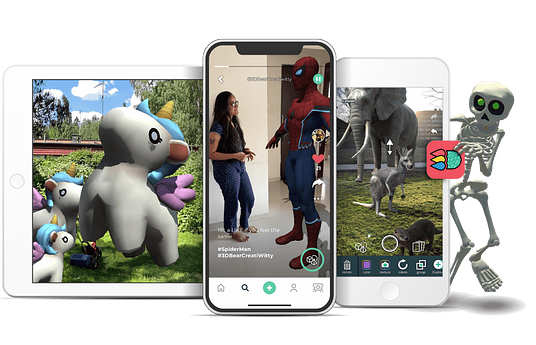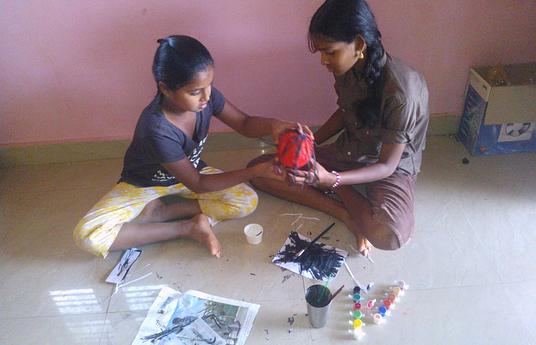As the world hurtles into an increasingly technologically-heavy future, we are at risk of having a skills shortage for this growing workforce as not enough young people have the adequate training for these industries. That’s where our project ‘Pedagogy and 3D Printing’ comes in.
The project that we’re trialling in Finland helps to integrate 3D printing skills into the classroom, which is useful for other fields in technology such as virtual reality and augmented reality which use the same technologies and are also growing industries.
The goal of the project is to create a network of 3D printing specialists for schools in Finland who can then teach and develop these future skills. The learning materials required for teaching 3D printing, virtual and augmented reality have been developed specifically for the project. The combined skills that the children will be learning about have been grouped together to be called 3D skills.
Not only do 3D skills prepare children for a new and growing workforce but they can be used to enhance the teaching of traditional subjects too.
‘The skills may be used in understanding phenomena in biology, mathematics or history,' says Jussi Kajala, Chief of Operations at 3D bear. 'The best way to go about it is to teach with a cross-curricular approach or by collaborating with different schools. We believe it is motivational for teachers to be able to teach with new technologies.’
The most important part of the project is not the technology itself but the pedagogy which supports and enables it.
The organisers were well aware that without adequate training and support the technology wouldn’t be used to its full potential or could even end up being completely unused. They took into account the anxieties some teachers may feel towards new technologies, and a key part of the project has always been to make sure it is an empowering experience rather than a hindrance to teachers.
Technology and Education as Partners
Technology and education can go hand in hand, it’s just with the world moving so fast education hasn’t been able to keep up. Children have phones, tablets and computers of their own in their family home – but these instruments are sorely lacking in education. When pupils are used to fast information being available and using these devices in their daily lives, formal education can seem dull and backwards in comparison.
Jussi Kajala explained his first-hand experience of implementing 3D technology into education.
‘Our field experiences have been extremely encouraging and inspiring proving to us that 3D skills are in demand (...) The technologies used in this kind of learning seem to enhance concentration, motivation and learning. Making by hand, creating the 3D shapes and the opportunity to have a tangible, but also virtual reality version of an object enables the learner to comprehend scaling, surface area, volume, space geometry and other lessons that have previously been considered difficult.’
Enhancing Learning Environments with Technology
Engaging children in learning is always the most important factor in any classroom. If a child is not engaged and active then they aren’t really learning, or they’re at least not learning to their full potential. When we spoke to Will Richardson of Modern Learners, he explained how environment and technology together can build an engaging experience for students.

‘The learning environments that are most productive are the ones where kids are working on projects that are interesting to them, asking questions that they’re interested in, working with other people and with their peers (...) Those are the types of learning environments where kids are fundamentally most joyous and interested, and are doing amazing work. If you start with that and then you add technology to it, then it becomes really interesting, because technology amplifies our ability to learn, to create, to connect and communicate, but it’s not required. It’s the classroom culture first and foremost that puts the emphasis on learning and then, once that’s established, the technology becomes very interesting.’
The fundamental aspects of quality education are not affected by the introduction of technology. It is still the environment, personalisation to student’s interests and the teacher who set the tone and with whom the success of a child’s education depends on. The technology is secondary, which is why the pedagogical materials that accompany the technology in this project are so important. Without them, the technology would just be an object in the room – the pedagogical materials are what brings them alive and makes the lessons engaging.
Old or New - The Skills Remain the Same
Technological skills have always seemed ‘new’ and separate from the rest of education, even though they actually compliment and enhance the skills that school pupils have always needed to develop.
Creating models via 3D printing requires creativity and coming up with the designs needs critical thinking and research skills. These are core skills which pupils have always been encouraged to develop and which are consistently seen as useful to have in the workplace.
It's not necessarily about a newness of skills or abilities, but a new way of training them. As Anneli Rautiainen, Counsellor of Education at the Finnish National Board of Education, explains, 'I don’t think we can continue to make progress without embracing digitalization as part of learning or teaching.'
 Again technology is not necessarily bringing something that different to the education table, it is simply a new and up-to-date means of exploring and developing these crucial skills that children need, whilst preparing them for the working world by exposing children to these industries which are creating more and more jobs. Education needs to keep up with the rest of the world, unless there be a disconnect between children's abilities and the jobs that are available to them.
Again technology is not necessarily bringing something that different to the education table, it is simply a new and up-to-date means of exploring and developing these crucial skills that children need, whilst preparing them for the working world by exposing children to these industries which are creating more and more jobs. Education needs to keep up with the rest of the world, unless there be a disconnect between children's abilities and the jobs that are available to them.
How 3D Skills are Taught in Lessons
An example of one of the lessons that is a part of the project is getting students to design a piece of furniture, then a room, and eventually an apartment – which is printed in 3D model size. Once they’ve managed to do this, the students play an Airbnb simulated game in which they rent out the apartment and alter the space to fit the needs of those renting. This incorporates design, mathematics, 3D modeling and business skills all into a practical hands-on creative lesson.
An example of a virtual reality lesson includes a Connect the Dots game, where students are able to model a human heart using VR glasses and then they get to 3D print it as an award. The lesson plan for this example is simple and easy, so can be used with younger grades – introducing these technologies and creative skills to children early on whilst bringing biology alive. This process also teaches children basic coding.
‘We hope that these experiences will create a unique learning platform for teaching 3D skills and become another Finnish success story,' says Jussi Kajala. We hope so too!
Find out more information about Pedagogy and 3D Printing on the project page.



